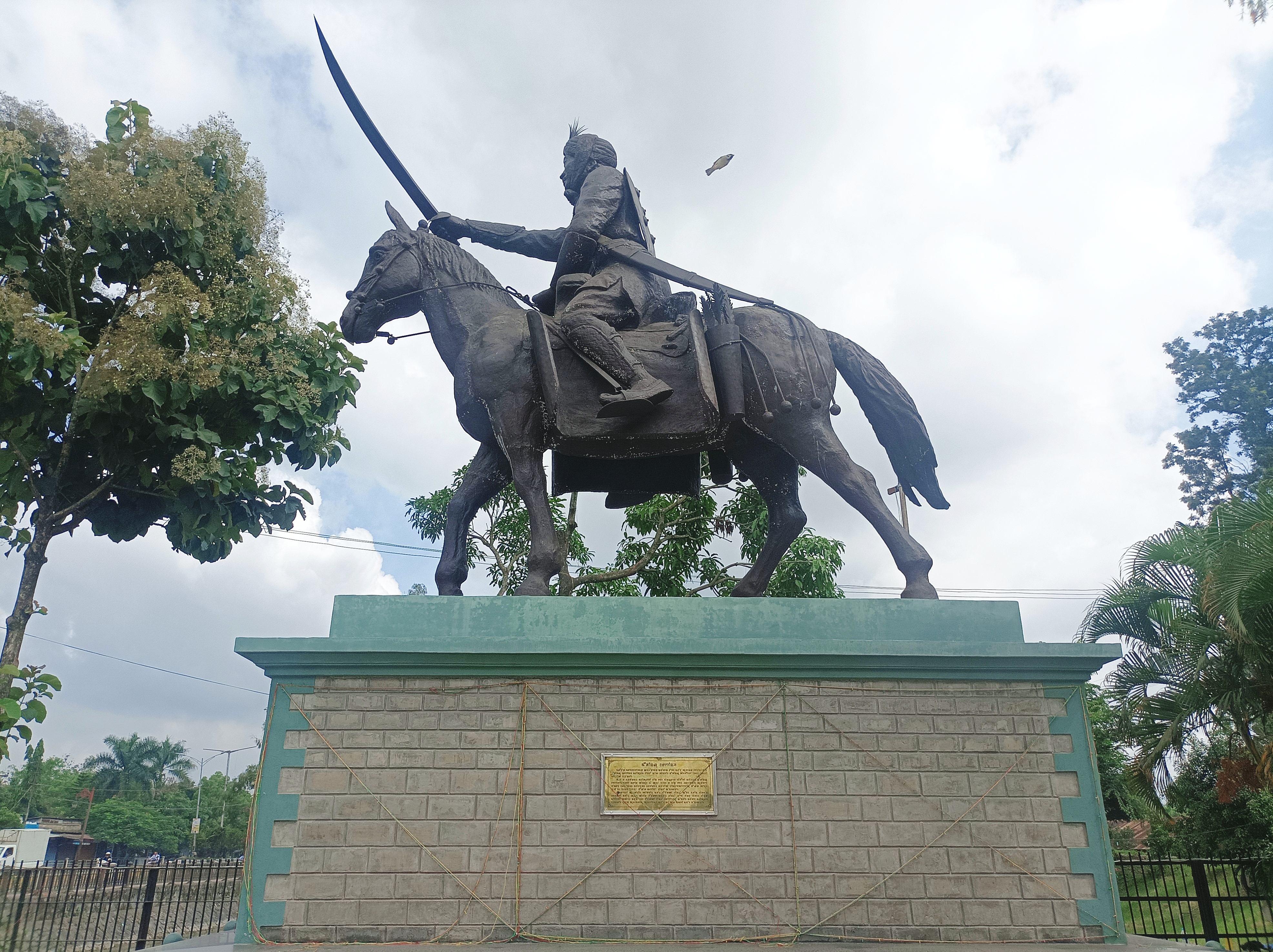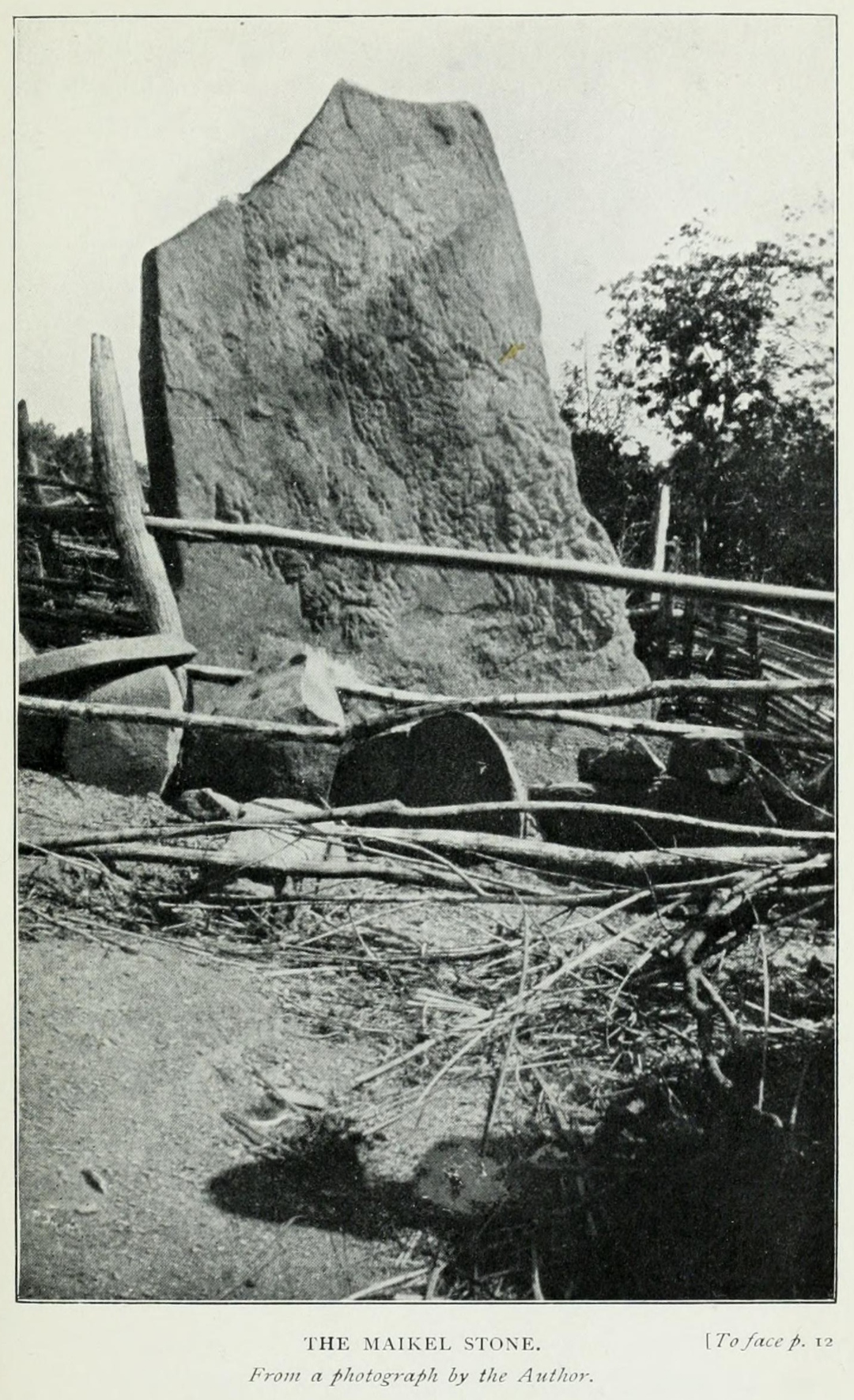|
Induprabha
Induprabha (), also spelled as Induprava (), was a Meitei queen of Kachari kingdom and a princess of Manipur kingdom. She was the consort of Dimasa king Krishnachandra of Cachar (in modern day Assam state).History of the Dimasas: From the Earliest Times to 1896 A.D.. India: Autonomous Council, N.C. Hills District (Assam), 1997. p. 75, 185 She was the daughter of Meitei king Modhuchandra Singh of Manipur.Joykumar Singh, N.. Colonialism to Democracy: A History of Manipur, 1819-1972. India: Spectrum Publications, 2002. p. 6 In Meitei royal chronicle, she was nicknamed as ''"Sicha Mayang Reima"''. ''Mayang Reima'' is a title for any Meitei queen of Cachar. Marriage Princess Induprabha, daughter of King Modhuchandra Singh of Manipur, was married to King Krishnachandra of Cachar around 1802 CE. Following the death of King Krishnachandra, his brother Govindchandra ascended the throne and married Induprabha without her consent. This action caused discontent among both th ... [...More Info...] [...Related Items...] OR: [Wikipedia] [Google] [Baidu] |
Meitei People In Assam
The Meitei people (), also called Manipuri people (), is one of the Demographics of Assam, minority ethnic groups in Assam. They are referred to as ''Mekhlee'', ''Mekhelee'', ''Meckley'', ''Monipuri'', ''Monipuriya'', ''Magalu'', ''Mogolu'', ''Moglie'', ''Moglai'', among many other names dedicated to them by the other people of Assam. Meiteis call Assam as "Tekhao" or "Tekhau" or "Tekhaw" (). In October 2020 their population was estimated 168,127 with its population, the Meitei tribe is a fairly large ethnic minority in Assam and Meitei culture can be found in everywhere places. History In the 16th century, the kings of Tekhao (Meitei language term for Assam) and Manipur had friendly relations. This friendship grew stronger after a route to Assam opened in 1536-37, leading to more social and cultural exchanges, as well as people moving between the regions. Meitei people started settling in Assam after a Political marriage, royal marriage in 1537. When Burmese King Bayinnaung ... [...More Info...] [...Related Items...] OR: [Wikipedia] [Google] [Baidu] |
Cachar
Cachar district is an administrative district in the state of Assam in India. After independence, the pre-existing undivided Cachar district was split into four districts: Dima Hasao (formerly North Cachar Hills), Hailakandi, Karimganj, and the current Cachar district. Silchar is Cachar district's center of government. Etymology The word ''Cacahr'' is derived from the Dimasa word ''Kachari'' and traces its origin to the Kachari Kingdom. History Pre-independence period Around the year 1536, the elder prince of Dimasa Kachari, Drikpati, and a younger prince, Dakhin, had a conflict. Dakhin and his followers were driven out and built a new capital at the Barak Valley, declaring themselves as Dibrasa or the Children of the Barak River (''Di'' means "River", and ''Brasa'' means "Barak"'').'' The Dibrasa were later known as Twiprasa and formed the Twipra Kingdom in the Barak Valley. In 1562, the Koch dynasty King Chilarai invaded and captured the Barak Valley from the Twipra ... [...More Info...] [...Related Items...] OR: [Wikipedia] [Google] [Baidu] |
Kachari Kingdom
The Dimasa Kingdom also known as Kachari kingdom was a late medieval/early modern kingdom in Assam, Northeast India ruled by Dimasa kings. The Dimasa kingdom and others ( Kamata, Chutiya) that developed in the wake of the Kamarupa kingdom were examples of new states that emerged from indigenous communities in medieval Assam as a result of socio-political transformations in these communities. The British finally annexed the kingdom: the plains in 1832 and the hills in 1834. This kingdom gave its name to undivided Cachar district of colonial Assam. And after independence the undivided Cachar district was split into three districts in Assam: Dima Hasao district (formerly ''North Cachar Hills''), Cachar district, Hailakandi district. The Ahom Buranjis called this kingdom ''Timisa''. In the 18th century, a divine Hindu origin was constructed for the rulers of the Kachari kingdom and it was named Hidimba, and the kings as Hidimbesvar. The name Hiḍimbā continued to be use ... [...More Info...] [...Related Items...] OR: [Wikipedia] [Google] [Baidu] |
Nara Singh
Nara Singh (1792 – 11 April 1850) also known as Chingthanglen Pamheiba and Meetingu Lairen Nonglen Sendreng Manik Khomba, was a ruler of the Kingdom of Manipur. He ruled first as regent from 1834 to 1844 and then as king for a period of six years from 1844 to 1850. His subjects called him ‘Eningthou Nungsiba’ or ‘our beloved king’. Early life Nara Singh was a son of King Badra Singh (r. April 1825 – June 1825 ) and Queen Loitongbam Chanu Premlata and the great grandson of Emperor Pamheiba, popularly known as Gharib Niwaz (r. 1709–1748). He was born at Sangolbal Moirang Leirak, Imphal, Manipur. According to the Cheitharol Kumbaba his father Badra Singh was holding several posts including that of Yaiskul Lakpa (minister) during the reign of Bhagyachandra(r. 1763–1799). For his involvement in a conspiracy against the king Badra Singh was exiled to Cachar in 1796. In 1819, Manipur was occupied by the Burmese forces. During this period all the princes of ... [...More Info...] [...Related Items...] OR: [Wikipedia] [Google] [Baidu] |
Chahi Taret Khuntakpa
The Chahi Taret Khuntakpa (), also known as the Seven Years Devastation, was a period in the history of Manipur, during which Manipur Kingdom was chaotically occupied by the Burmese from 1819 CE to 1825 CE (''3212 MF to 3218 MF''). The Chahi Taret Khuntakpa was a catastrophic period in the history of Manipur, marked by widespread destruction, political instability, and the near-extermination of the Meitei population. It represents the final large-scale genocide of the Meitei people in the 19th century, leading to the significant dispersion of the population both within and outside the region. The devastation resulted from a combination of internal dynastic conflicts and external Burmese military interventions, which left deep scars on the region’s social and political fabric. The Burmese invaded Manipur multiple times, with the most significant invasion occurring in 1819 during the reign of King Marjit Singh, led by the Burmese general Mingimala Bandula. The Burmese occu ... [...More Info...] [...Related Items...] OR: [Wikipedia] [Google] [Baidu] |
Marjit Singh
Marjit Singh was a king of Manipur kingdom between 1812 and 1819 as a vassal of Burma, but was eventually expelled by the Burmese.: "Marjit ruled over Manipur for seven years (1812-1819) as a vassal of the Burmese King." The Burmese devastated Manipur during a seven-year occupation that came to be known as '' Chahi-Taret Khuntakpa''. Family Marjit Singh was a son of Raja Bhagya Chandra, the ruler up to 1798. Afterwards, his numerous sons fought for the throne. Madhuchandra succeeded his father at first. He fled to Cachar when the Burmese threatened the kingdom. He tried to regain it with the help of the Cachar king Govinda Chandra. However, he was killed by the troops of his brother, Chourjit Singh. During Chourjit Singh's reign, Marjit Singh fled to Cachar and got into a serious dispute there. Then he went to Burma in 1806 and received the help of King Bodawpaya in 1812. Bodawpaya sent a Burmese force, expelled Chourjit Singh and installed Marjit Singh as a vassal king. Mar ... [...More Info...] [...Related Items...] OR: [Wikipedia] [Google] [Baidu] |
Silchar
Silchar is a city and the headquarters of the Cachar district of the state of Assam, India. It is second largest city of Assam after Guwahati in terms of population and GDP. It is also administrative capital of Barak Valley division. It is located south east of Guwahati. It was founded by Captain Thomas Fisher in 1832 when he shifted the headquarters of Cachar to Janiganj in Silchar. It earned the moniker "Island of Peace" from Indira Gandhi, the then Prime Minister of India. Silchar is the site of the world's first polo club and the first competitive polo match. In 1985, an Air India flight from Kolkata to Silchar became the world's first all-women crew flight. Silchar was a tea town and Cachar Club, Cachar club was the meeting point for tea planters. Etymology The name Silchar comes from the two Bengali language, Bengali words 'shil' and 'char', meaning 'rock' and 'shore/island' respectively. The city was founded in Janiganj-Sadarghat area of the town near the Barak Valley, B ... [...More Info...] [...Related Items...] OR: [Wikipedia] [Google] [Baidu] |
Maharani
Maharaja (also spelled Maharajah or Maharaj; ; feminine: Maharani) is a royal title in Indian subcontinent of Sanskrit origin. In modern India and medieval northern India, the title was equivalent to a prince. However, in late ancient India and medieval south India, the title denoted a king. The form "Maharaj" (without "-a") indicates a separation of noble and religious offices, although since in Marathi the suffix ''-a'' is silent, the two titles are near homophones. Historically, the title "Maharaja" has been used by kings since Vedic times and also in the second century by the Indo-Greek rulers (such as the kings Apollodotus I and Menander I) and then later by the Indo-Scythians (such as the king Maues), and also the Kushans as a higher ranking variant of "Raja". Eventually, during the medieval era, the title "Maharaja" came to be used by sovereign princes and vassal princes, and the title "Maharajadhiraja" was used by sovereign kings. Eventually, during the Mugh ... [...More Info...] [...Related Items...] OR: [Wikipedia] [Google] [Baidu] |
Ahom–Meitei Relations
The :en:Ahom_people, Ahom people (alias '':en:Tai_Ahom, Tai Ahoms'') and Meitei people (alias ''Manipuris''), integral to the histories of Assam and Manipur respectively, have a long history of political, cultural, and economic interactions. The Ahoms, of Tai people, Tai origin, established the Ahom Kingdom, which later became the modern state of Assam. The Meiteis ruled the Kangleipak Kingdom, which evolved into present-day Manipur state. Their relationship involved trade, diplomatic exchanges, cultural interactions, and occasional conflicts, influenced by geographical proximity and shared cultural elements, contributing to the historical development of both regions. According to scholar J. Roy, the relationship between the Ahom kingdom of Assam and the Meitei kingdom of Manipur was consistently cordial. A coin issued by Ahom king Swarga-deo Pramatha Singh in 1746 CE was discovered in Manipur, suggesting active commercial relations between the two kingdoms at that time. Despit ... [...More Info...] [...Related Items...] OR: [Wikipedia] [Google] [Baidu] |




